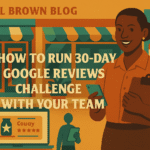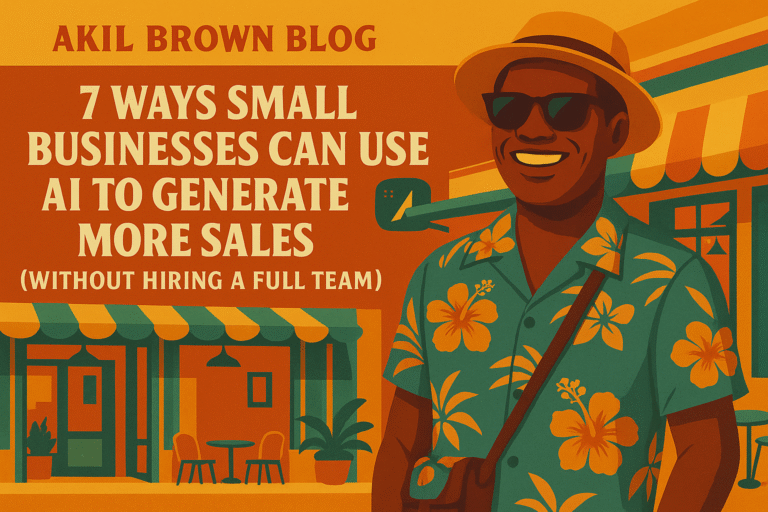
7 Ways Small Businesses Can Use AI to Generate More Sales (Without Hiring a Full Team)
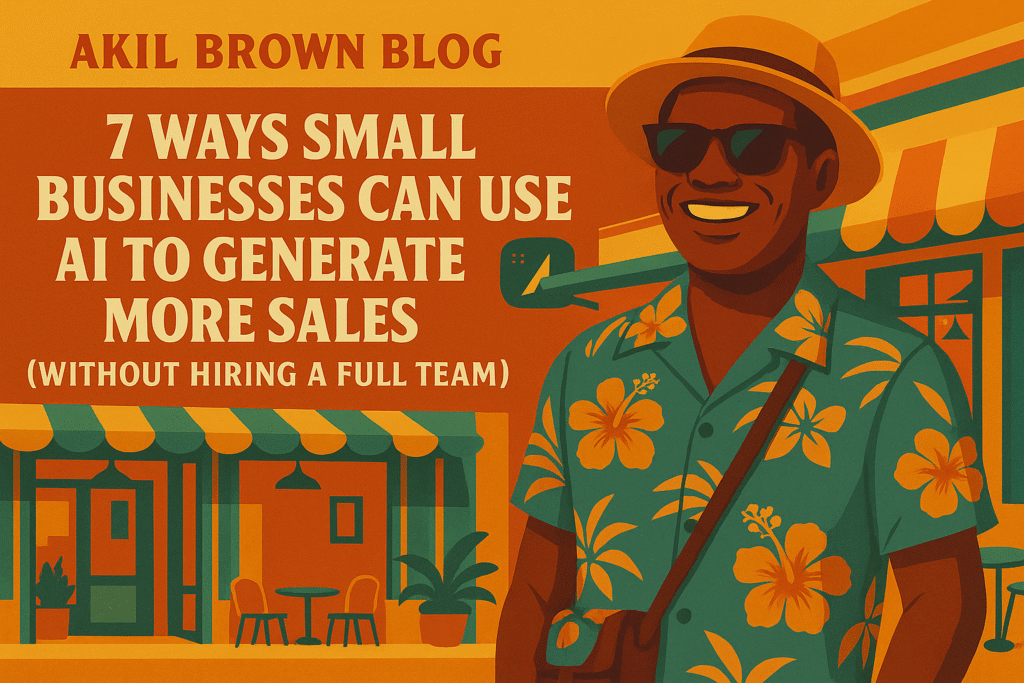
Introduction
If you clicked on this article to read, you are aware that Artificial Intelligence is no longer just for tech giants or Fortune 500 companies. Today, AI tools are becoming affordable, accessible, and incredibly effective for small businesses looking to boost sales, streamline operations, and stay ahead of the competition. You decided to take matters into your own hands and gain the knowledge you need to improve your company competitive edge or you are just searching for ways to use AI in your small business.
Whether you’re a boutique retailer, a local restaurant, or a service-based business, AI can help you attract more customers, personalize marketing, close more deals, and save precious time. Let’s face we can all use more time to enjoy family and friends and that’s is where AI can help.
Here are 7 practical, real-world ways small businesses are using AI to drive more revenue—right now. Each tip includes a visual suggestion to help bring your blog to life if you’re turning this into a visual article or Instagram carousel.
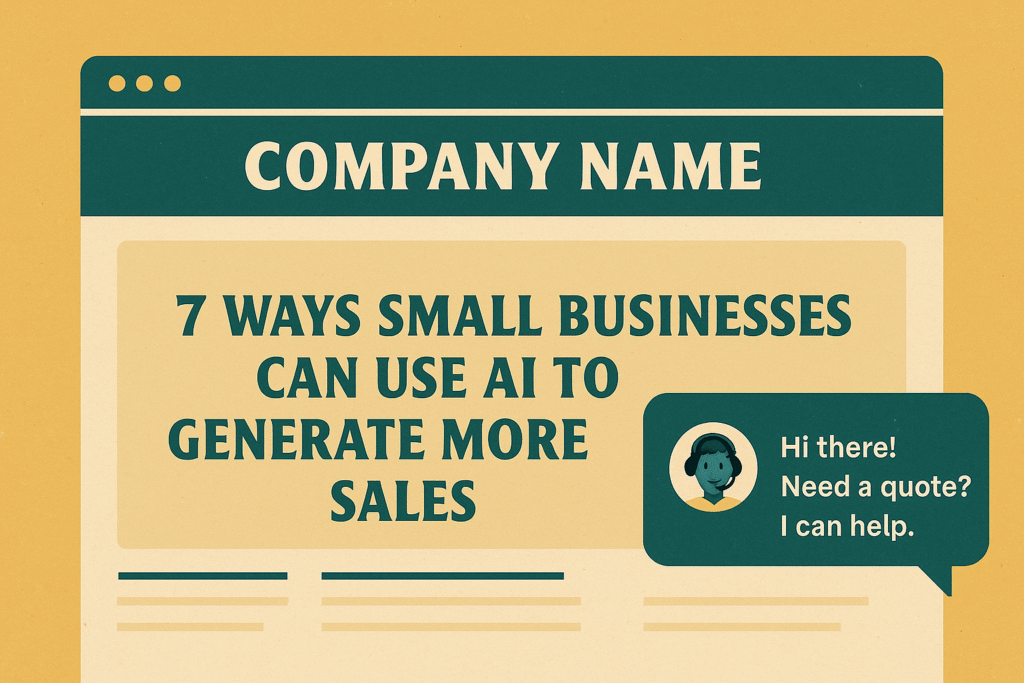
1. Use AI Chatbots to Turn Website Visitors into Customers
AI-powered chatbots (like ManyChat, Tidio, or ChatGPT plugins) can instantly respond to questions, qualify leads, and even take orders—all without a human in sight. Instead of letting your website visitors bounce, an AI bot keeps them engaged and guides them toward purchase.
Example Use: A local cleaning company installs a chatbot on their homepage to answer FAQs, give quotes, and book appointments 24/7. Bookings increase by 32% in 3 weeks.
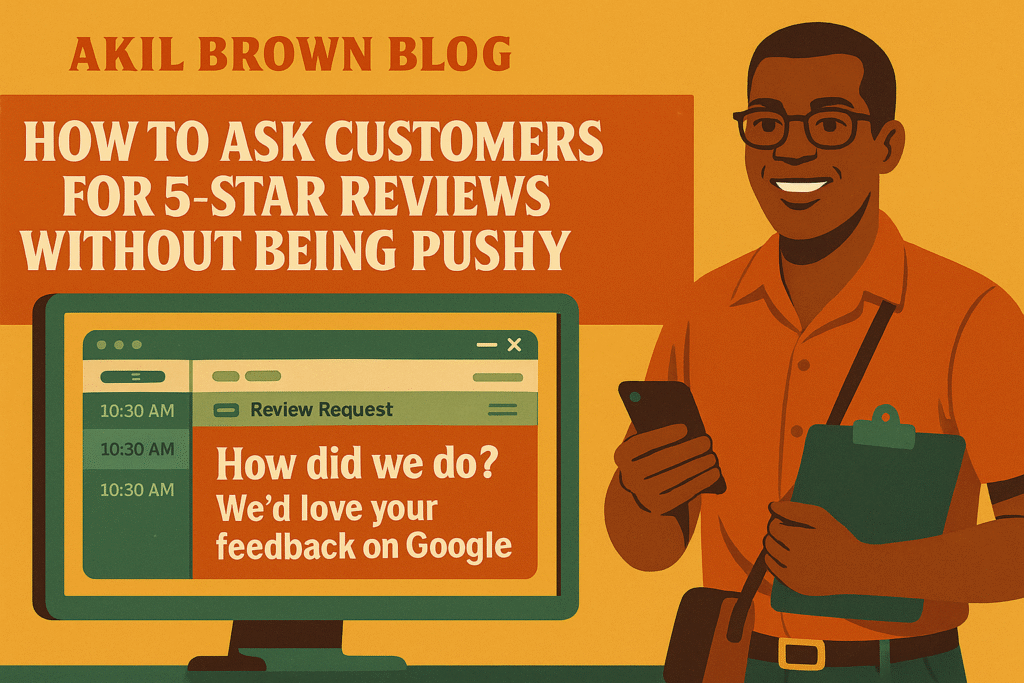
2. Automate Review Requests to Increase Social Proof
Your reputation sells for you—and AI can help you automate the process of collecting 5-star reviews. Tools like Podium, NiceJob, or your own Zapier workflow can send timed review requests via text or email after a customer visit.
Reviews boost local SEO, build trust, and influence purchase decisions more than ads ever will.
Example Use: A dental office uses an AI tool to send a review invite 1 hour after each visit. In 60 days, they go from 38 to 178 reviews and hit the top of Google Maps for “Brooklyn dentist.”
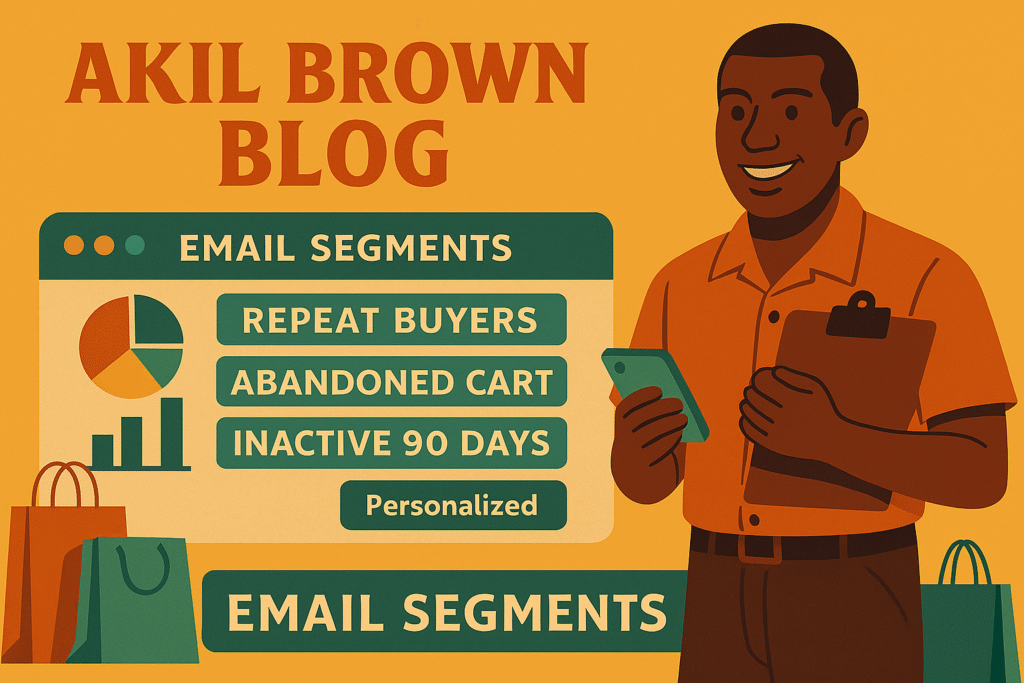
3. Personalize Your Email Marketing with AI-Generated Segments
AI doesn’t just blast emails—it creates intelligent, behavior-based campaigns that send the right message to the right person at the right time.
Using tools like ActiveCampaign, Mailchimp, or Klaviyo with AI segmentation, you can:
- Send product suggestions based on past purchases
- Automatically follow up with abandoned carts
- Offer discounts to cold leads
- Upsell existing customers based on behavior
Example Use: A boutique skincare brand uses AI to identify customers who haven’t purchased in 90 days and sends a “We Miss You” offer. Revenue from returning customers increases by 45%.
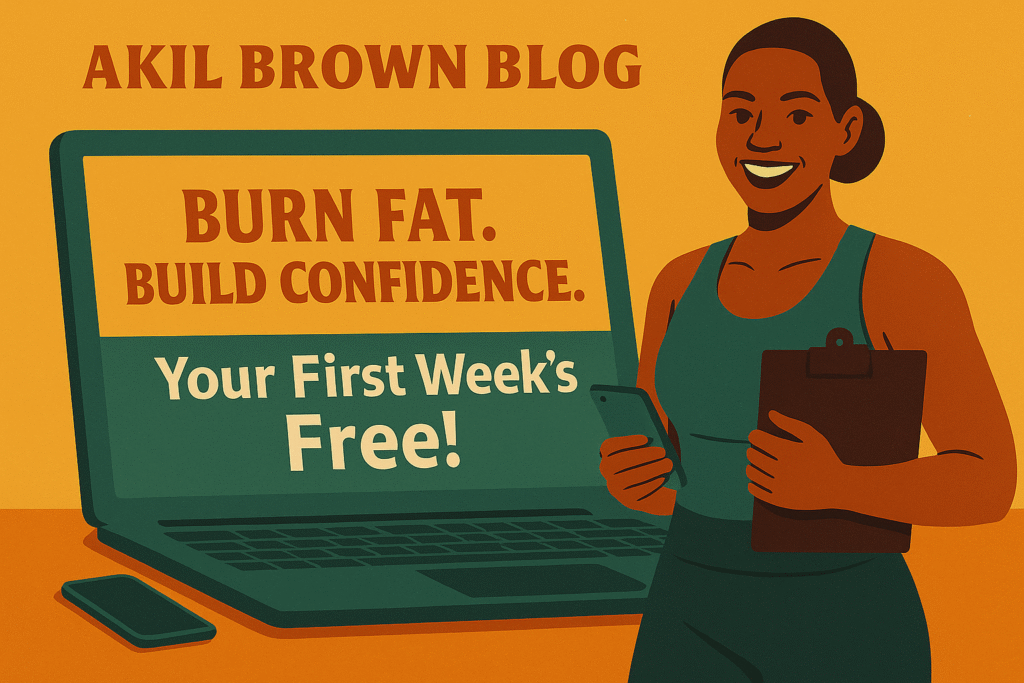
4. Generate Sales Copy, Ads & Offers in Seconds with AI Writing Tools
Writing is one of the biggest time sucks for small business owners. AI writing assistants like Jasper, ChatGPT, or Copy.ai can create:
- Product descriptions
- Google Ads
- Email subject lines
- Promotional campaigns
- Instagram captions
…all tailored to your audience, tone, and goals.
Example Use: A personal trainer uses ChatGPT to generate 10 Facebook ad variations in 5 minutes, tests 3, and gets 4x return on ad spend.

5. Predict What to Sell Next with AI-Powered Analytics
AI analytics tools like Pencil, Google Analytics 4 (with machine learning), and HubSpot analyze your customer data and tell you what’s working—and what’s not.
You can use AI insights to:
- Identify your top-performing products
- Forecast inventory needs
- Predict buying behavior
- Spot seasonal trends in advance
Example Use: A fashion boutique uses AI sales analytics to forecast demand for a specific color trend. They restock early and sell out in a week.
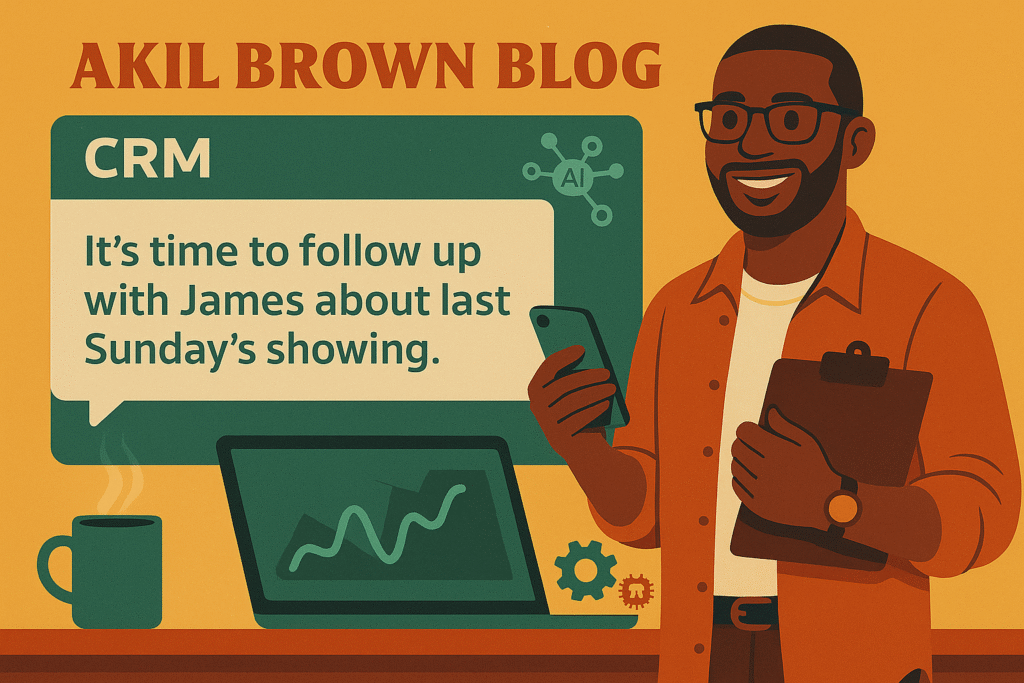
6. Improve Your Follow-Up Game with AI-Powered CRMs
Follow-up is where most small businesses lose sales. But with AI-powered CRMs like Pipedrive, HubSpot, or Zoho, you can:
- Track customer interactions
- Get AI reminders for follow-ups
- Use templates auto-filled with customer info
- Score leads based on likelihood to buy
Example Use: A real estate agent uses AI in her CRM to follow up with warm leads exactly 2 days after an open house. Response rate improves by 60%.

7. Create Personalized Shopping Experiences with AI Recommendation Engines
Want to increase your average order value? Use AI product recommendations based on user behavior.
Just like Amazon suggests “Frequently Bought Together” or “Customers Also Liked,” your store can offer:
- Personalized upsells
- Dynamic discounts
- Real-time suggestions
Tools like Shopify’s AI, Nosto, and Recombee make this super easy.
Example Use: A candle shop adds a “You Might Also Like” section powered by AI. Average order value jumps from $38 to $51 in 30 days.
Final Thoughts: You Don’t Need to Be a Tech Expert to Use AI
You don’t need to hire a data scientist, build a custom app, or understand Python to benefit from AI. The tools mentioned above are built for small business owners, not Silicon Valley developers.
Start simple. Choose one area where you want to boost sales—email, reviews, follow-ups—and add automation or AI assistance there. Once you see the ROI, you’ll naturally start expanding.
AI isn’t just the future—it’s your competitive edge in the now.
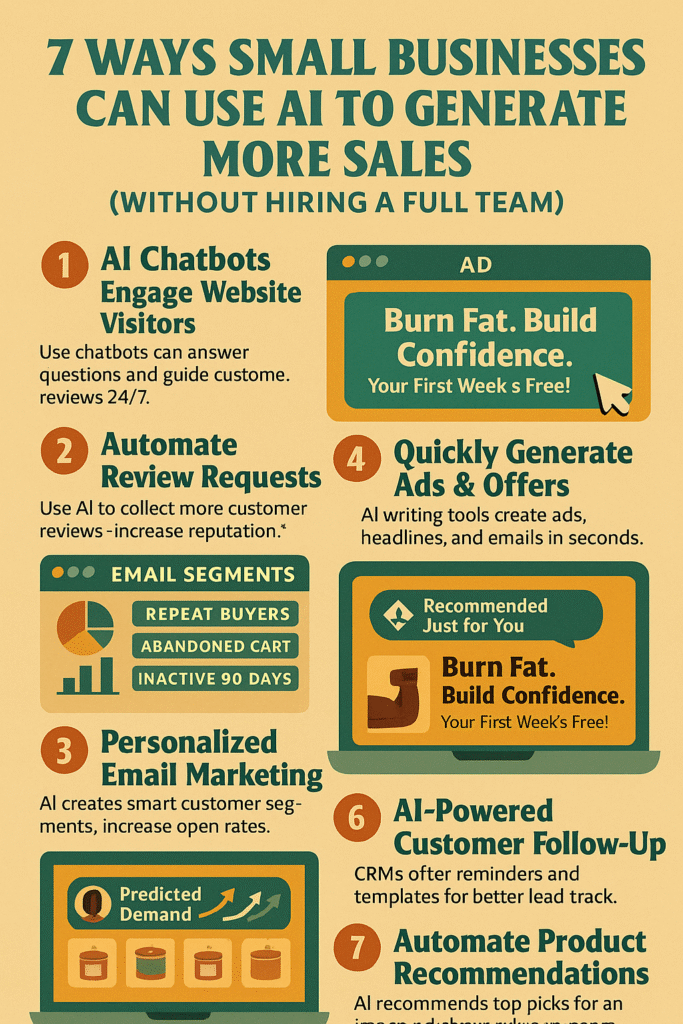
✅ Quick Recap of AI Tools by Function
| Goal | Tool Examples |
| Chatbots | ManyChat, Tidio, ChatGPT |
| Review Automation | Podium, NiceJob, Zapier |
| Email Personalization | Mailchimp, ActiveCampaign, Klaviyo |
| Copywriting & Ads | Jasper, ChatGPT, Copy.ai |
| Sales Analytics | Pencil, GA4, HubSpot |
| Smart CRMs & Follow-Ups | HubSpot, Pipedrive, Zoho |
| Product Recommendations | Nosto, Recombee, Shopify AI |

